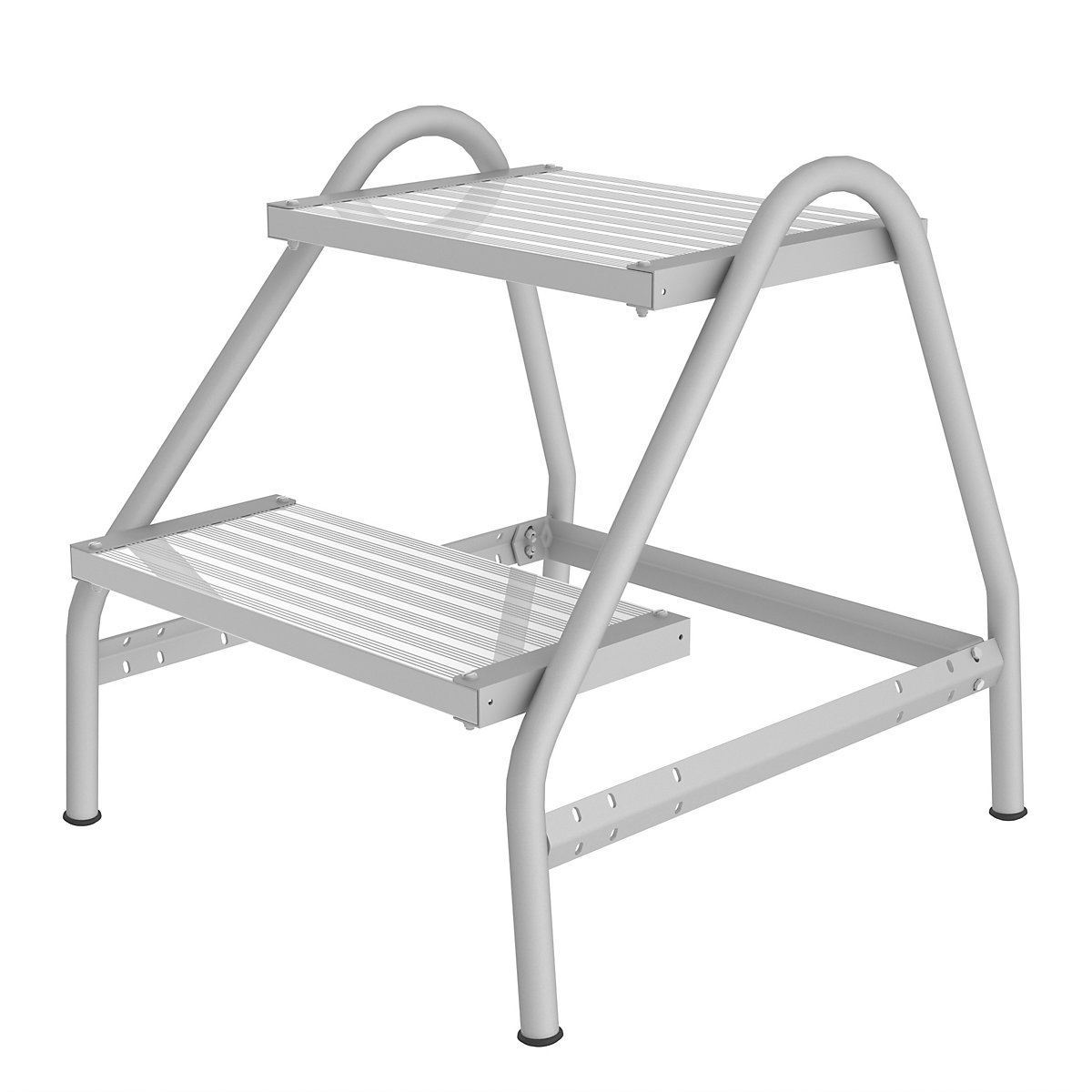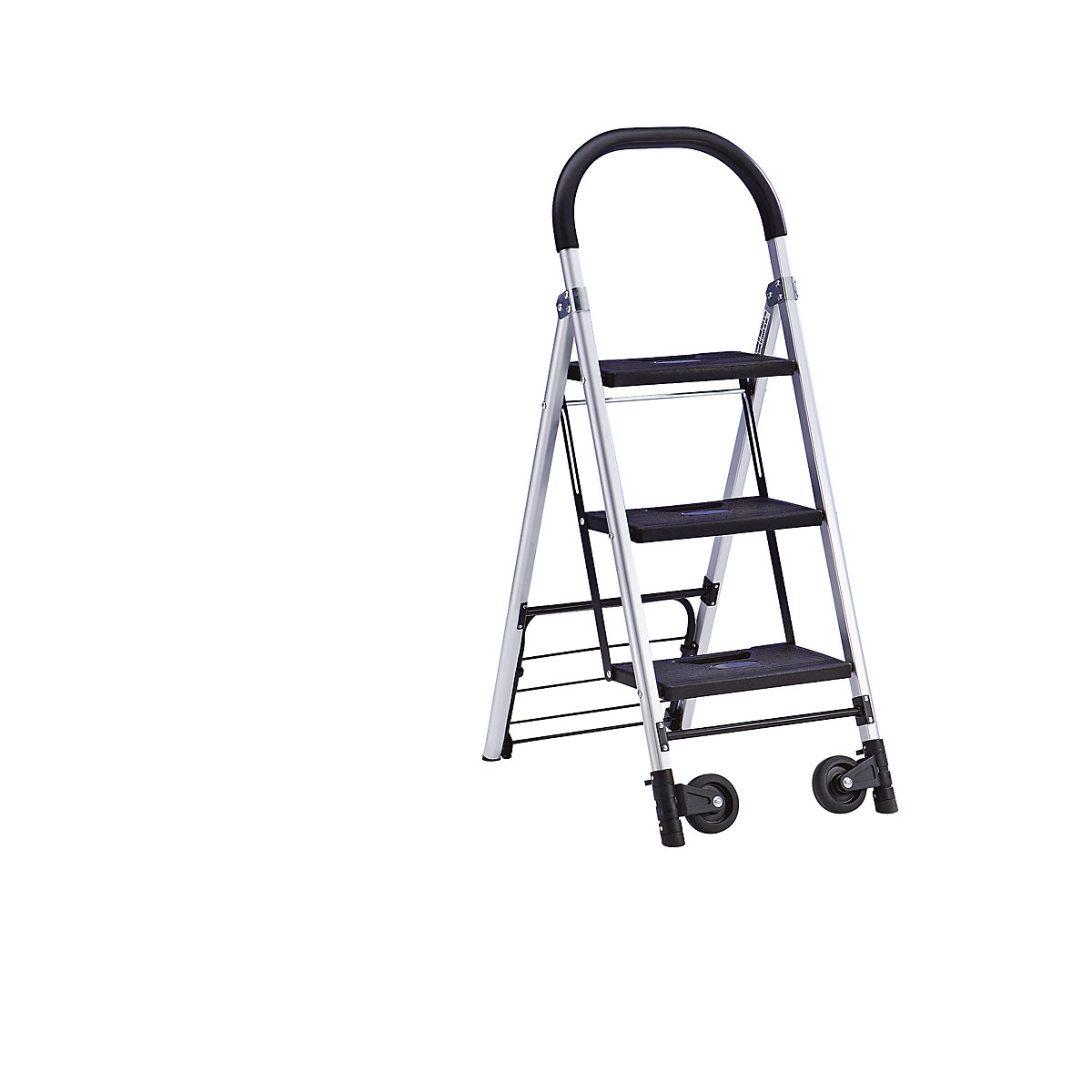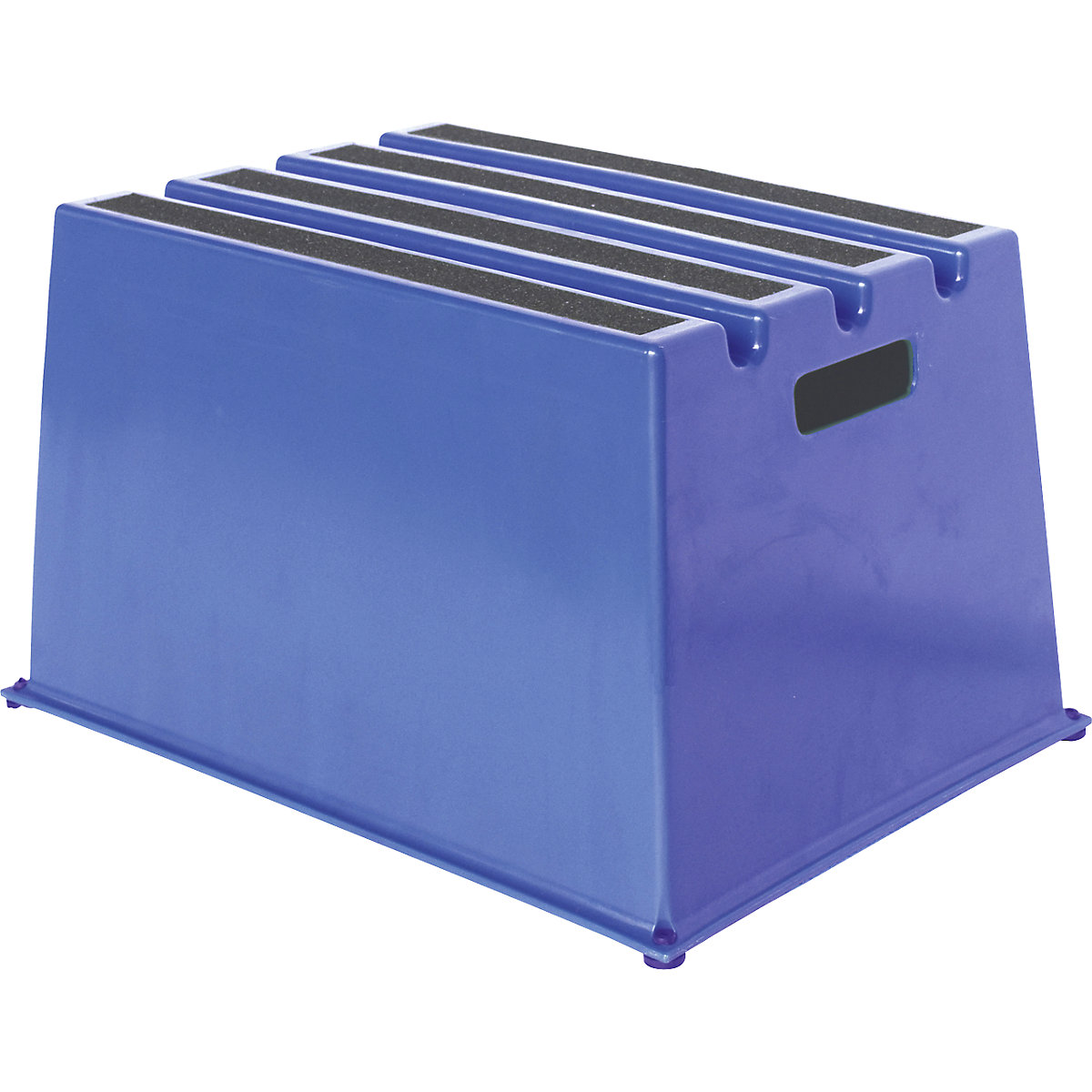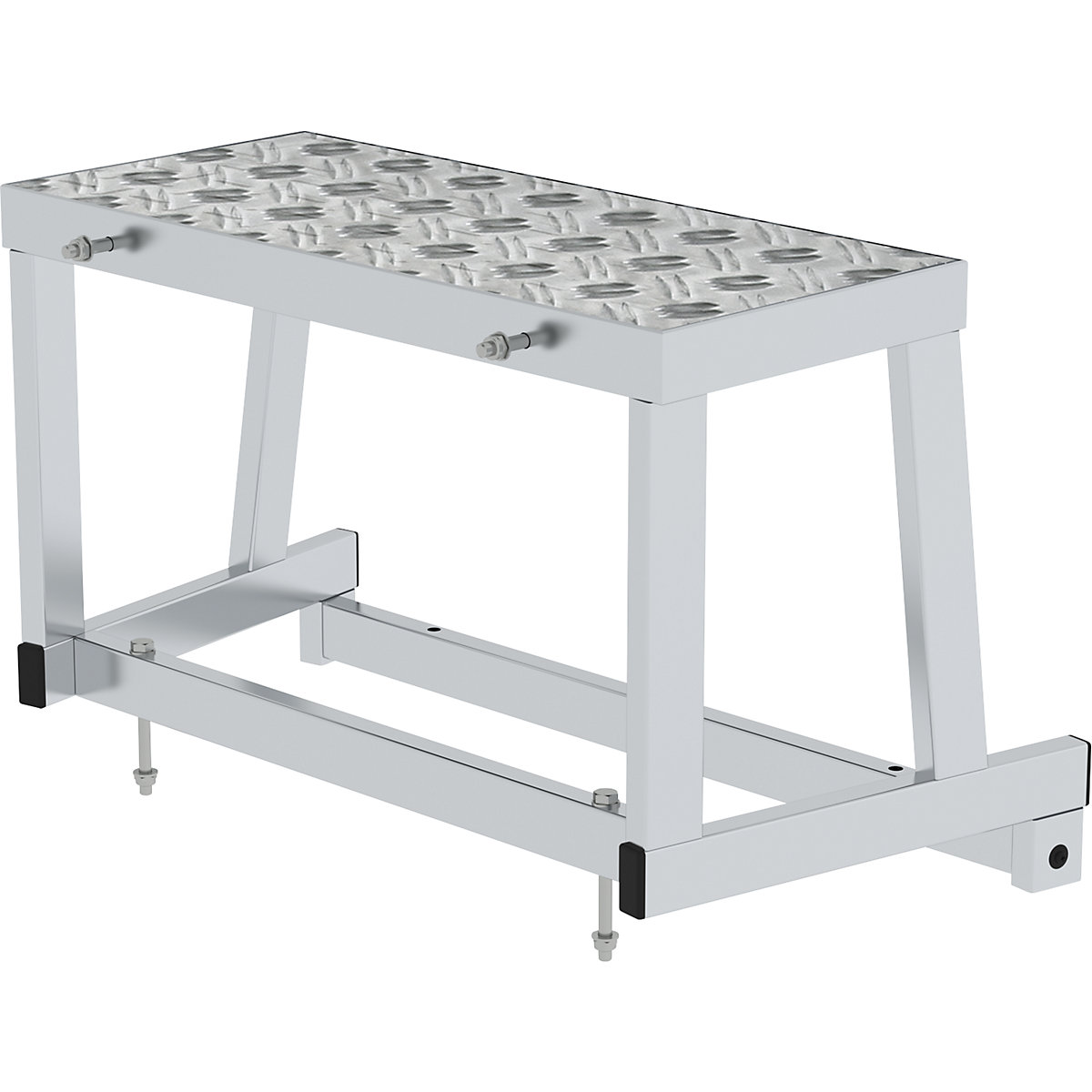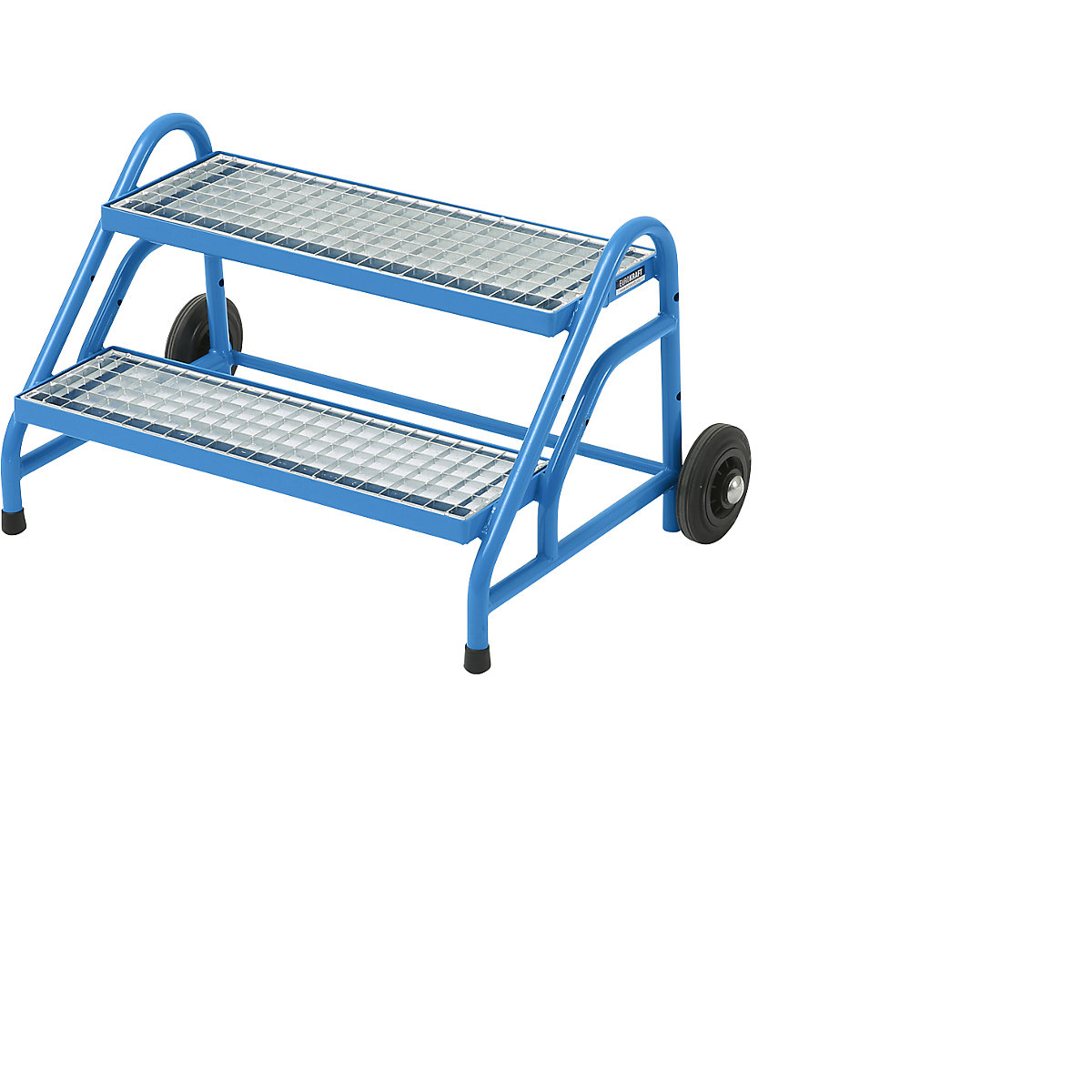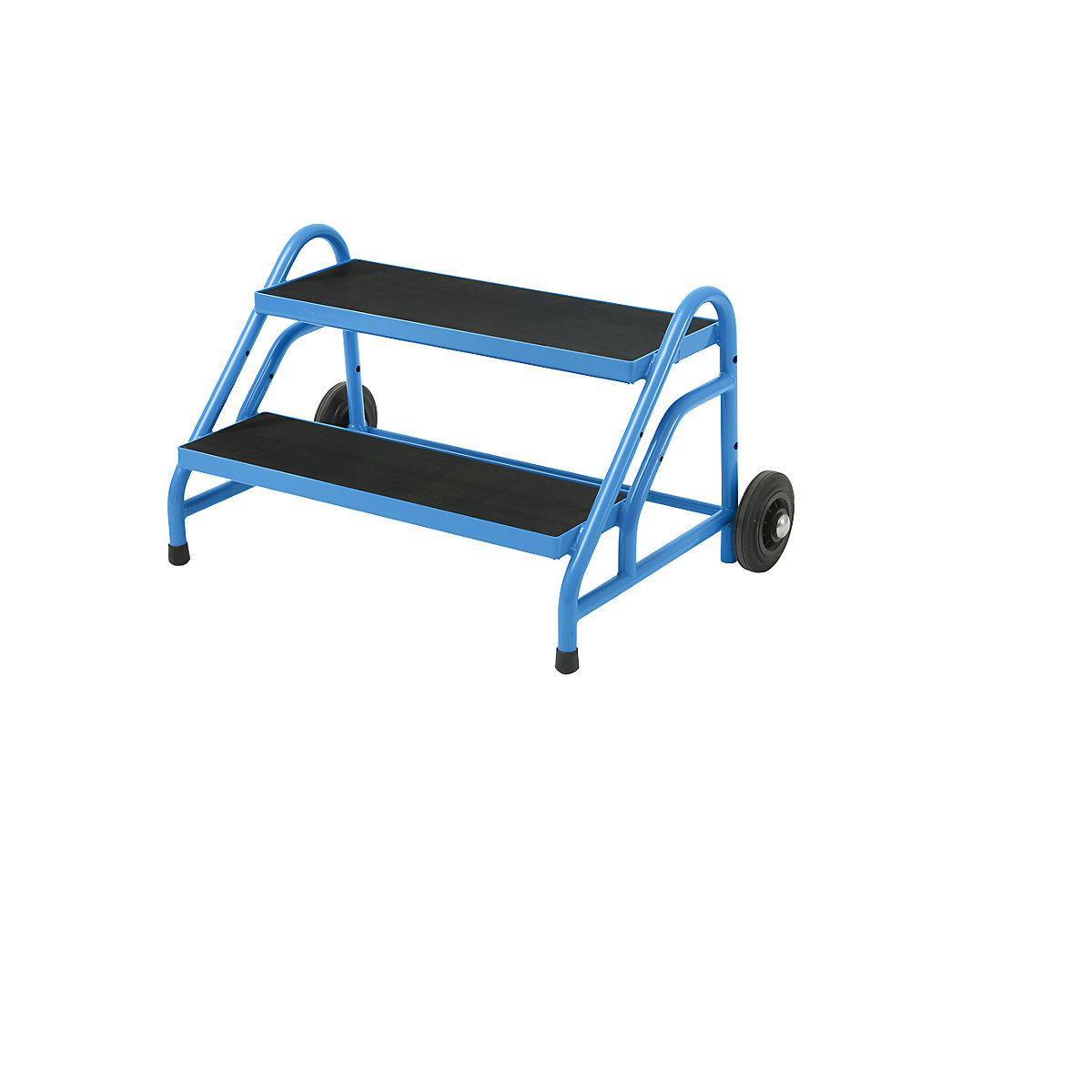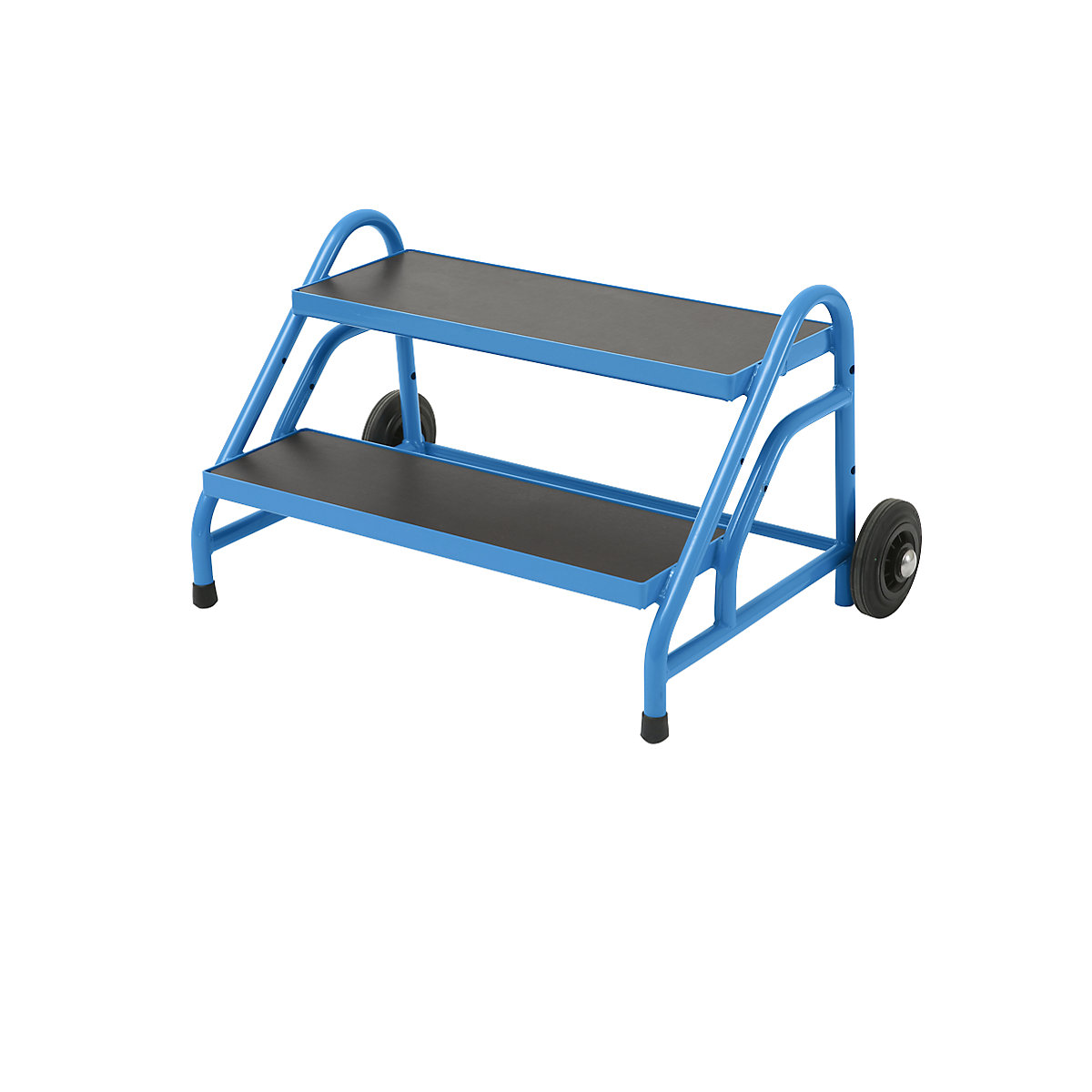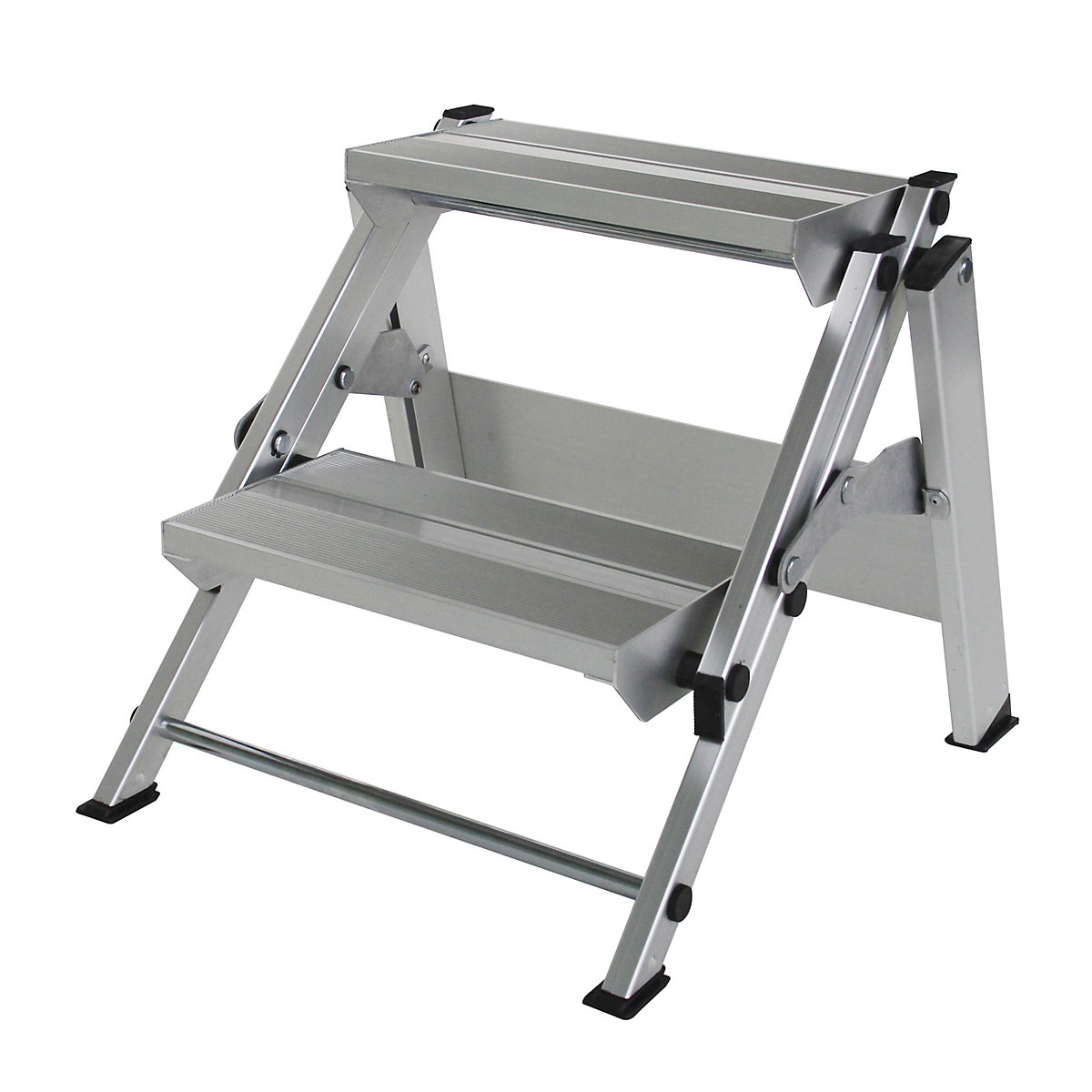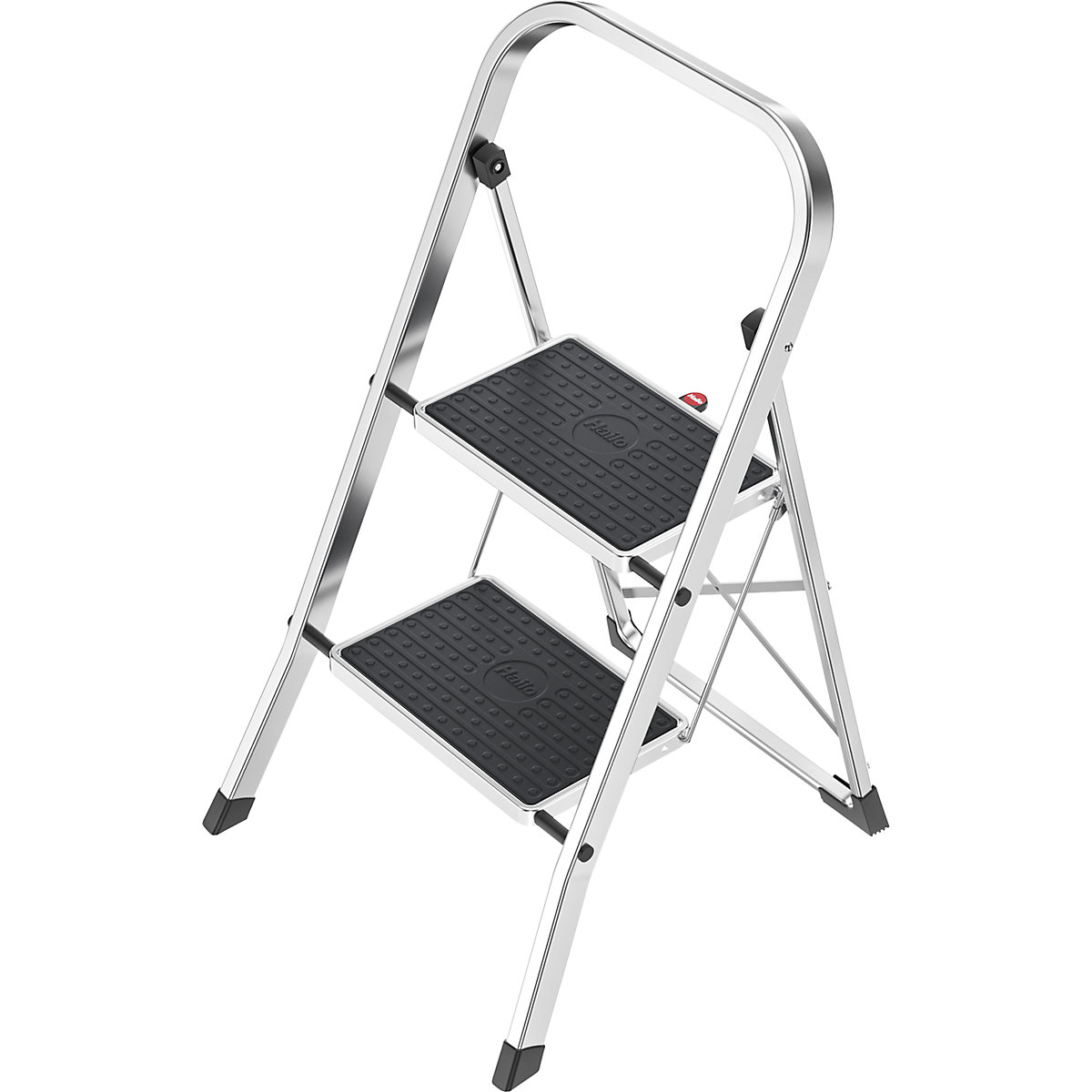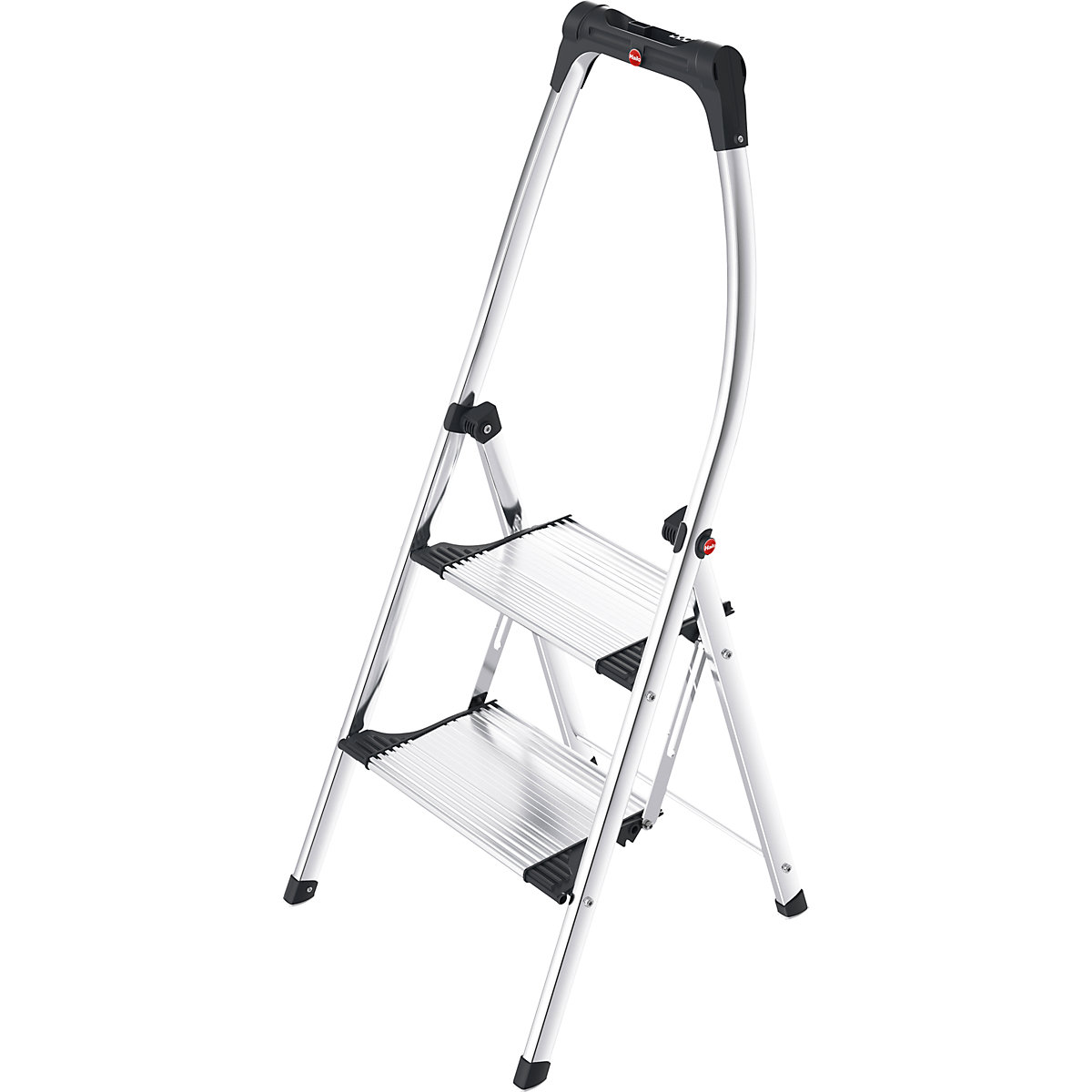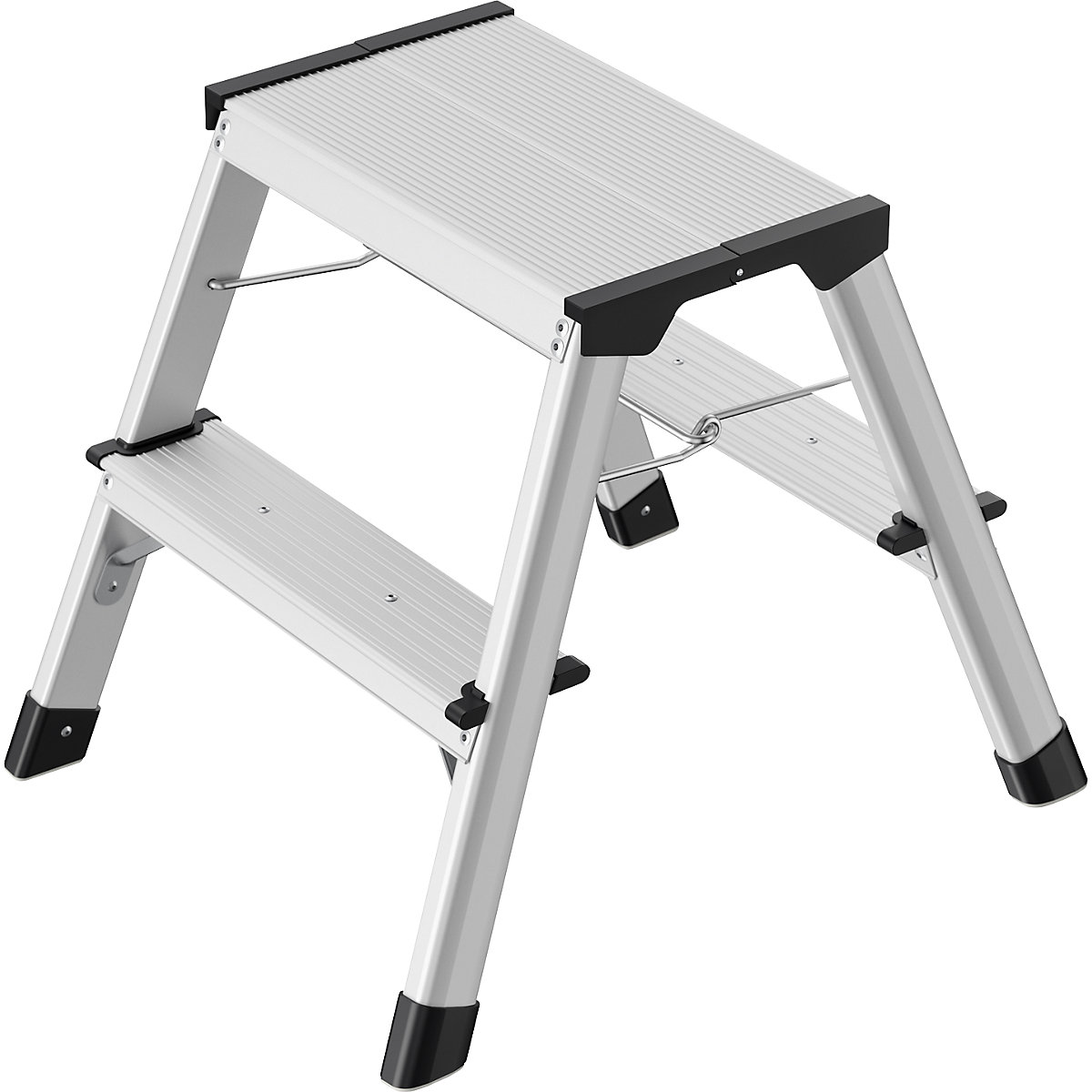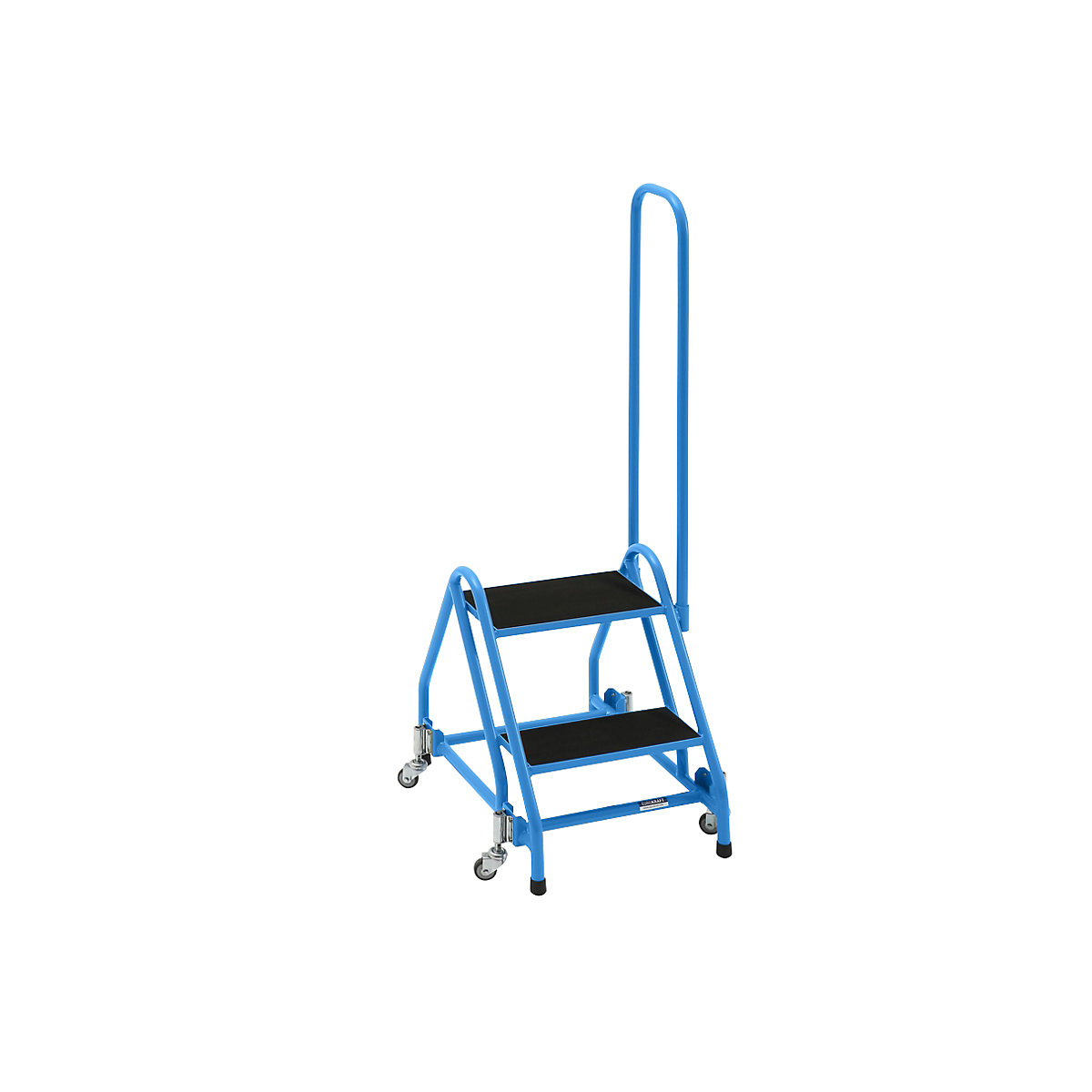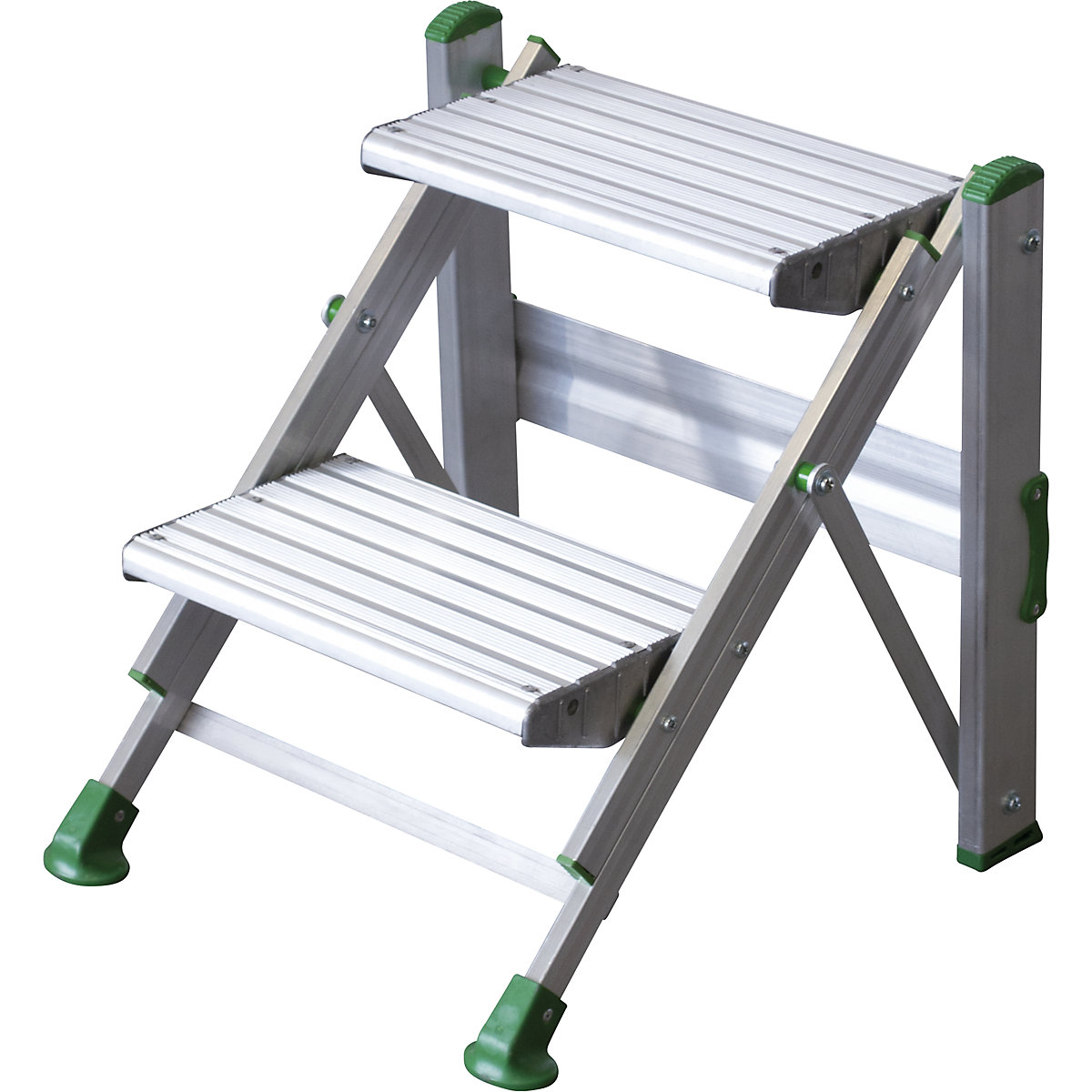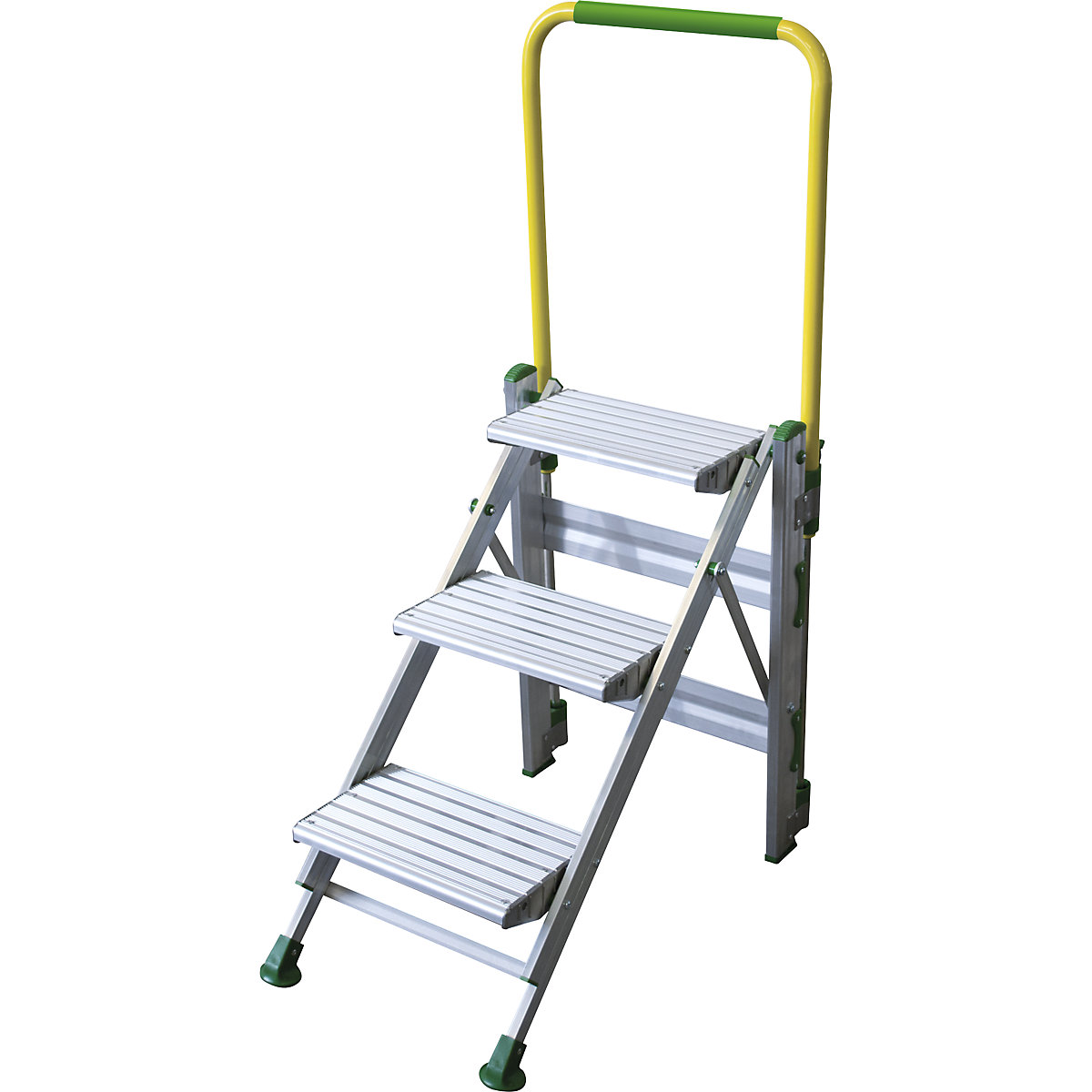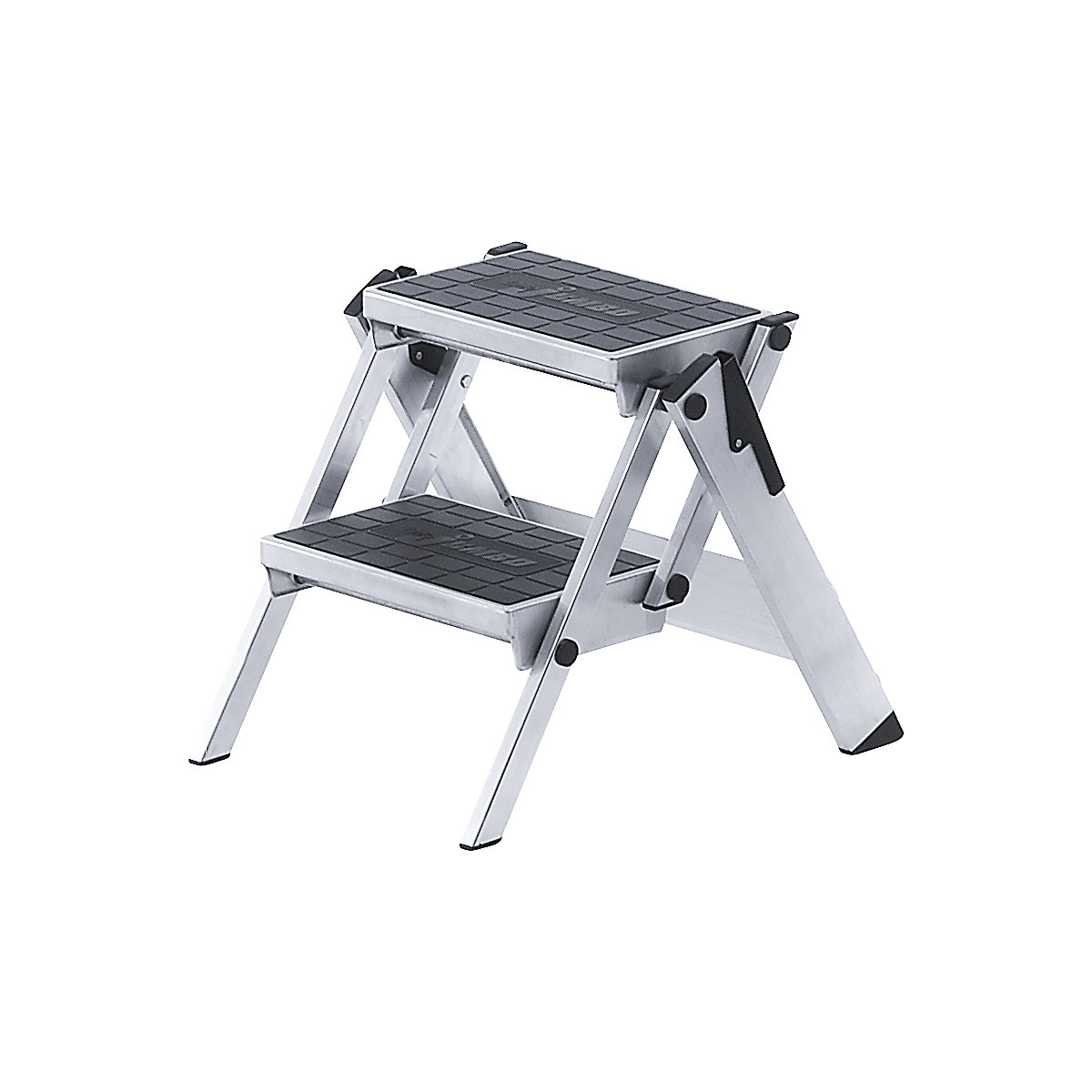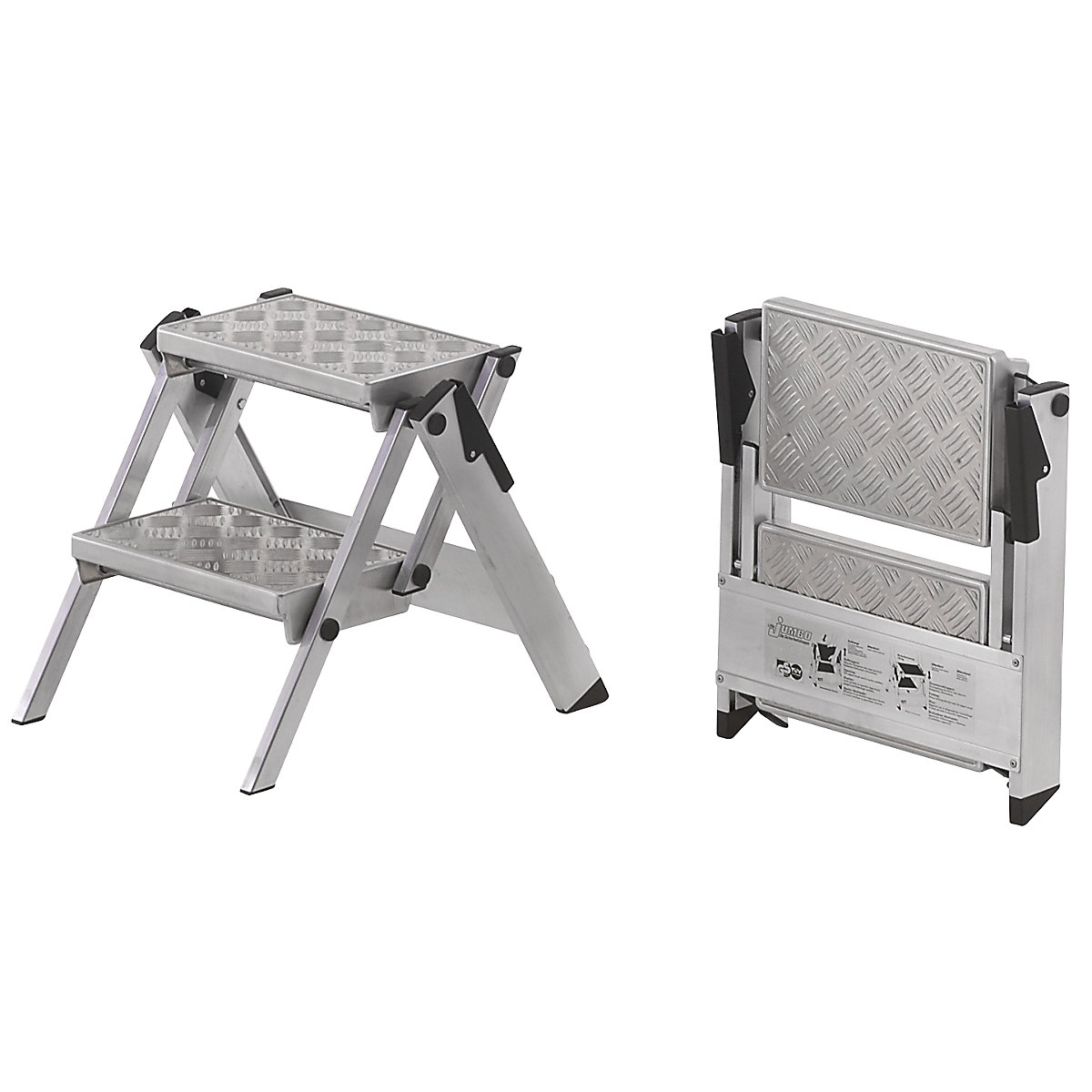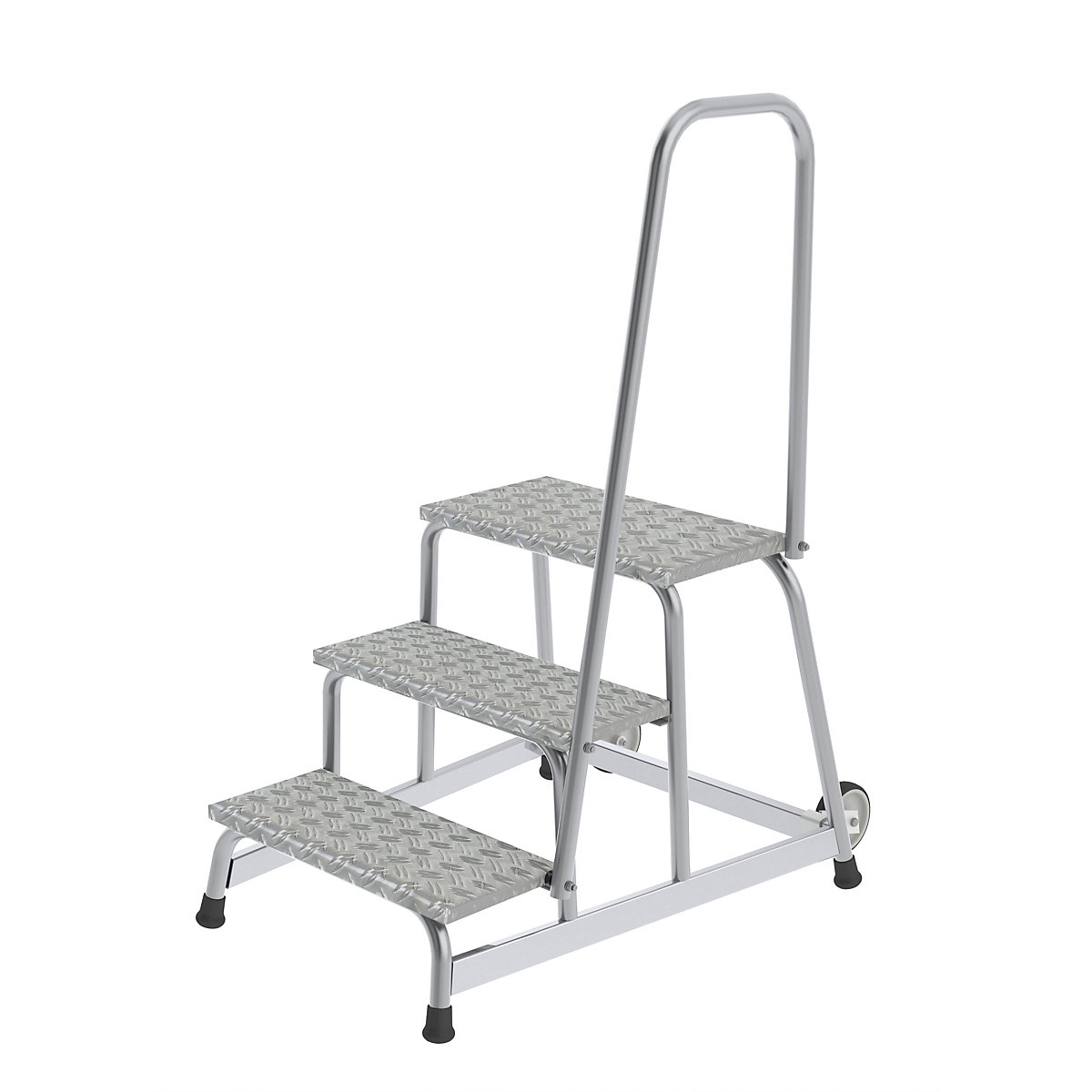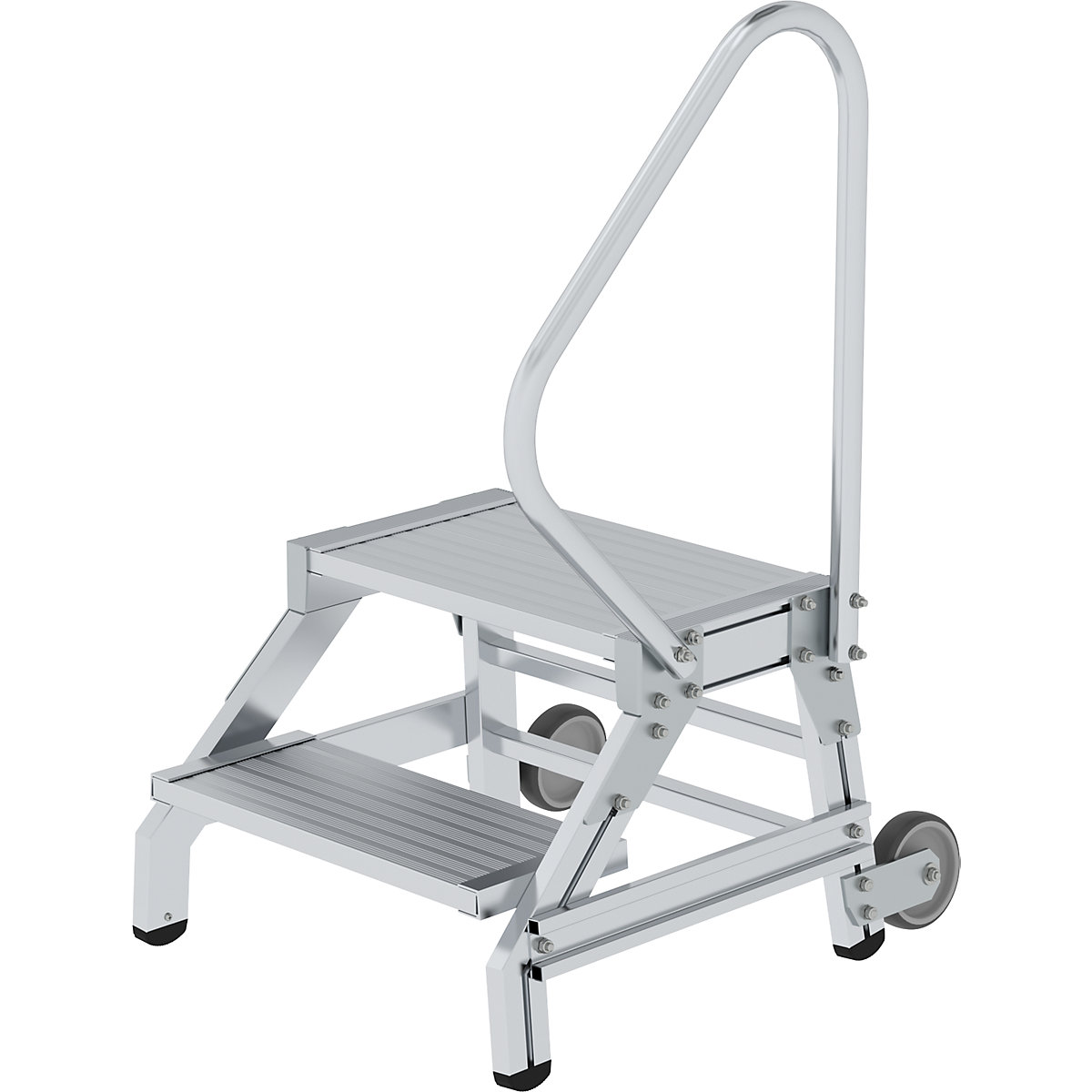Steps
More freedom, more simplicity, more safety. Step stools & Work steps are the practical and safe helper for everyday work and are compact and fast to use. Featuring a large platform, steps also provide safe and comfortable footing.
In the category Steps we offer you products of the following brands: MUNK, eurokraft pro, Hailo, KRAUSE, Layher, Altrex, eurokraft basic, HYMER, Twinco.
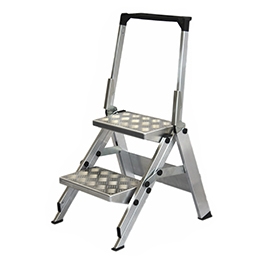
Step Stools and their guidelines.
They have to be light in weight, as they are being raised. They need to be stable, because work is done on them. They need to have a high load bearing capacity, because employees usually have heavy tools with them when standing on them. These are requirements that we place on steps. And only when these are satisfied can we be sure that these climbing aids will make your work easier and keep your employees feeling safe. This is why these requirements have also been formalised in the DIN EN 14183 standard for steps.
What does the standard mean for me?
DIN EN 14183 defines specific procedures, dimensions and material components for the design of steps.
- Wood, plastic that is at least 3 mm thick, steel that is at least 0.9 mm thick and aluminium that is at least 1.2 mm thick as potential materials for supporting components such as steps or rails. Rubber and soft PVC as potential materials for anti-slip surfaces. Please note: plastic steps must be tested for temperature resistance and durability.
- Testing the load bearing capacity is important: each step must be able to withstand 260 kg.
- Ladder steps, stair steps and step stools must have a surface at least 200 x 300 mm to stand on. A mobile step at least 200 x 200 mm.
- Ladder steps and step stools must have a step depth of at least 80 mm. Stair steps at least 150 mm.
- The vertical distance between steps may total a maximum of 250 mm.
- Ladder steps, stair steps and step stools may be a maximum of 1000 mm, mobile steps a maximum of 500 mm high.
- The anti-slip covering must total at least 0.2 mm.
- Instructions for use that contain information on the manufacturer, the date of manufacture, area of use, product name and the maximum permissible load must be affixed to the steps.
Which Step Stool would you like to have?
Whether ladder steps, stair steps, step stools or mobile steps, three or four steps don't make a big difference when at a height. In contrast to ladders, all steps may be used right up to the topmost step. The decisive differences for you results from the material and the design. Depending on the working environment, different materials may be suitable.
- Everywhere that it is, for example, oily, then no plastic or wooden surfaces may be used due to a danger of slipping.
- You can use step stairs to work at machines better, because they can be placed directly up against the machine.
- Mobile steps are often used in offices and sales rooms, because they are quick to move from one place to another.
An alternative to steps are working platforms. These have an even wider surface.
These products may also be of interest to you:
Telescopic loaders | Steps | Beams | Aluminium ladders | Hand rails | Double ladders | Guenzburger step ladders | HYMER mobile access towers



